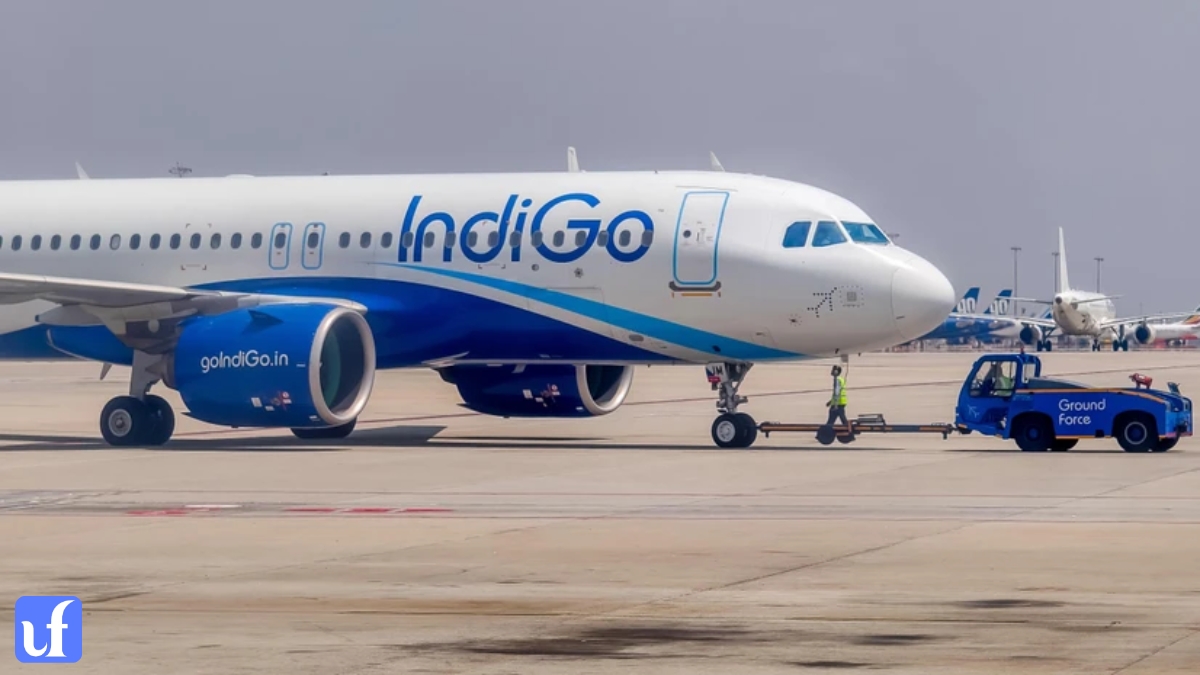In the dynamic world of aviation, few airlines have achieved the meteoric rise of IndiGo. Since its first flight in 2006, IndiGo has grown from a fledgling low-cost carrier to India’s largest airline, commanding a market share of over 60% and serving millions of passengers annually. As of July 2025, IndiGo is not content with domestic dominance; it’s embarking on an ambitious expansion that promises to redefine air travel. From launching long-haul flights to Europe to expanding its fleet with cutting-edge aircraft, IndiGo is poised to become a global aviation powerhouse. This article explores the multifaceted aspects of IndiGo’s expansion, offering insights into its strategies, achievements, and future aspirations.
Table of Contents
Fleet Expansion: Building a Robust Foundation
Current Fleet and Recent Additions
As of mid-2025, IndiGo operates a fleet of over 400 aircraft, primarily consisting of Airbus A320 family planes, known for their fuel efficiency and reliability. In 2024 alone, the airline added 58 new aircraft, marking its highest annual delivery to date. This growth has been crucial in maintaining IndiGo’s capacity despite challenges like engine issues with Pratt & Whitney-powered A320neo aircraft.
Wide-Body Aircraft for Long-Haul Routes
A significant milestone in IndiGo’s expansion is its entry into the wide-body segment. In April 2024, IndiGo placed an order for 30 Airbus A350-900 aircraft, powered by Rolls-Royce Trent XWB engines, with deliveries scheduled to begin in 2027. These aircraft will enable IndiGo to operate long-haul flights to destinations in Europe, North America, and beyond, catering to the growing demand for international travel from India.
Additionally, IndiGo has accelerated its long-haul ambitions by wet-leasing Boeing 787 aircraft from Norse Atlantic Airways since March 2025. This interim solution allows IndiGo to serve routes like Mumbai to Manchester and Amsterdam, launched in July 2025, before its own wide-body fleet arrives.
Regional Connectivity with Smaller Aircraft
To enhance connectivity to tier-II and tier-III cities in India, IndiGo is exploring the acquisition of up to 100 smaller regional aircraft, such as the ATR 72, Airbus A220, or Embraer E175. This move aligns with the Indian government’s UDAN scheme, which aims to boost regional air travel. As of now, IndiGo operates 45 ATR 72-600 aircraft, each with 78 seats, serving smaller cities like Darbhanga and Pantnagar.
| Aircraft Type | Current Count | Purpose | Future Plans |
|---|---|---|---|
| Airbus A320-200/neo | ~350 | Domestic and short-haul international | Continue as fleet backbone |
| Airbus A321neo | ~5 | High-density routes, business class | Expand with IndiGo Stretch product |
| ATR 72-600 | 45 | Regional connectivity | Potential order of 100 more |
| Airbus A350-900 | 0 (30 on order) | Long-haul international | Deliveries from 2027 |
| Boeing 787 (wet-leased) | 2 | Long-haul interim solution | Additional leases under exploration |
Addressing Engine Challenges
IndiGo has faced challenges with Pratt & Whitney engines, leading to the grounding of up to 70 aircraft in 2024. To mitigate this, the airline has shifted toward CFM LEAP-1A engines and implemented wet-leases and lease extensions. By mid-2025, IndiGo expects to have most of its grounded fleet operational, ensuring continued expansion without significant disruptions.
Destination Expansion: Connecting India to the World
International Growth
IndiGo’s network has grown significantly, with the airline serving 132 destinations as of July 2025, including 93 domestic and 39 international cities. In 2025, IndiGo added several new international routes, marking a bold step toward global expansion. Key additions include:
- Mumbai to Manchester and Amsterdam: Launched in July 2025, these are IndiGo’s first long-haul routes to Europe, operated with wet-leased Boeing 787 aircraft.
- London and Athens: Announced as part of IndiGo’s plan to add 10 new international destinations, these routes enhance connectivity to major European hubs.
- Jaffna, Sri Lanka: Introduced in 2024, Jaffna became IndiGo’s second destination in Sri Lanka, reflecting its focus on regional international markets.
IndiGo aims to increase its international destinations to over 50 by mid-2026, with a goal to boost its international capacity share from 28% to 40% by FY2030. The airline is also exploring routes to underserved markets in Southeast Asia, Central Asia, and Eastern Africa, such as Bishkek and Siem Reap.
Domestic Network Strengthening
Domestically, IndiGo continues to dominate with over 90 destinations, including metro cities like Delhi, Mumbai, and Bengaluru, as well as smaller cities like Adampur and Hindon, added in 2025. The airline’s focus on regional connectivity aligns with India’s growing air travel demand, driven by a rising middle class and government infrastructure initiatives.
Codeshare Partnerships
To enhance its global reach, IndiGo has partnered with airlines like Turkish Airlines and Qatar Airways, offering codeshare flights to over 30 destinations in Europe and beyond. These agreements allow passengers to book seamless connections on a single ticket, improving accessibility and convenience.
Market Share and Financial Performance: A Dominant Force
Market Leadership
IndiGo’s dominance in the Indian aviation market is unparalleled. As of April 2025, the airline holds a 64.1% domestic market share, which increased to 65% in May 2025. This growth is driven by IndiGo’s reputation for punctuality, affordability, and an extensive network. The airline carried over 90 lakh (9 million) passengers in May 2025 alone, solidifying its position as India’s preferred carrier.
Financial Resilience
IndiGo’s financial performance in FY2025 reflects its operational strength. In Q4 FY2025 (January-March 2025), the airline reported a net profit of INR 3,067.5 crore (approximately USD 370 million), a 62% increase year-over-year, with revenue of INR 22,152 crore. For Q1 FY2025 (April-June 2024), IndiGo recorded a net profit of INR 27.3 billion and total income of INR 202.5 billion, achieving a 14% profit margin. These results were bolstered by high passenger demand during events like the Mahakumbh Mela and favorable fuel prices.
| Financial Metric | Q4 FY2025 | Q1 FY2025 |
|---|---|---|
| Net Profit (INR) | 3,067.5 crore | 27.3 billion |
| Revenue (INR) | 22,152 crore | 202.5 billion |
| Profit Margin | 27.5% | 14% |
Stock Performance
IndiGo’s parent company, InterGlobe Aviation, has seen its market capitalization reach INR 2.3 trillion as of July 2025, with shares rallying 24% since the start of the year. The stock traded at INR 5,965.85 on July 1, 2025, reflecting strong investor confidence in IndiGo’s growth trajectory.
Strategic Initiatives: Innovating for Growth

Introduction of Business Class
In November 2024, IndiGo introduced its “IndiGo Stretch” business class product on select routes, starting with Delhi-Mumbai. By the end of 2024, the airline aimed to equip all 20 daily flights on this route with business class seats. This move caters to premium travelers and diversifies IndiGo’s revenue streams, aligning with its goal to compete with full-service carriers.
Digital Transformation
IndiGo is leveraging technology to enhance customer experience. Its mobile app offers seamless booking, flight tracking, and web check-in, while advanced data analytics optimize operations. These efforts contribute to IndiGo’s industry-leading on-time performance of 80.2% across major metro airports.
Sustainability Efforts
IndiGo is committed to sustainability, investing in fuel-efficient aircraft like the A320neo and A350-900. The airline is also exploring eco-friendly practices, such as predictive maintenance and optimized flight routes, to reduce its carbon footprint.
Challenges and Competition: Navigating the Skies
Engine Reliability Issues
IndiGo has faced challenges with Pratt & Whitney engines, which grounded up to 70 aircraft in 2024. The airline has mitigated this by transitioning to CFM LEAP-1A engines and expects to have most grounded aircraft operational by mid-2025. This issue highlights the importance of supply chain reliability in IndiGo’s expansion plans.
Competitive Landscape
The Indian aviation market is becoming increasingly competitive. Air India, under new ownership, is expanding its domestic and international presence, while newer players like Akasa Air are gaining traction. IndiGo’s ability to maintain low costs, high punctuality, and superior service will be critical to sustaining its market leadership.
Global Supply Chain Constraints
Global aircraft shortages and supply chain issues pose challenges for IndiGo’s fleet expansion. The airline is addressing this through wet-leases and strategic planning to ensure timely deliveries.
Future Plans: Aiming for Global Leadership
IndiGo’s vision extends beyond 2025. The airline aims to:
- Increase International Capacity: Achieve a 40% international capacity share by FY2030, up from 28% in 2025.
- Expand Long-Haul Operations: Introduce more direct flights to major global hubs with the A350-900 fleet.
- Enhance Cargo Services: Grow IndiGo CarGo to capitalize on the rising demand for air freight.
- Strengthen Regional Connectivity: Add more tier-II and tier-III cities to its network, supporting India’s aviation growth.
By 2030, IndiGo plans to operate over 600 aircraft, serving a diverse range of domestic and international destinations. This ambitious roadmap positions IndiGo to compete with global carriers while maintaining its low-cost ethos.
Conclusion
IndiGo’s expansion in 2025 marks a pivotal chapter in its journey from a domestic low-cost carrier to a global aviation leader. With a robust fleet, an expanding network, and a focus on innovation, IndiGo is well-positioned to capitalize on India’s booming aviation market. As the airline continues to add new routes, introduce premium services, and overcome challenges, it remains a beacon of reliability and affordability for millions of travelers. Share your thoughts on IndiGo’s growth in the comments below or subscribe to our newsletter for the latest aviation updates!
Frequently Asked Questions (FAQs)
1. What are the new destinations added by IndiGo in 2025?
In 2025, IndiGo has expanded its international network by adding several new destinations, including Manchester, Amsterdam, London, and Athens. These routes, particularly the long-haul flights to Manchester and Amsterdam launched in July 2025, mark IndiGo’s entry into the European market. The airline also added Jaffna, Sri Lanka, in 2024, and plans to reach over 50 international destinations by mid-2026. Domestically, IndiGo has introduced flights to cities like Adampur and Hindon, enhancing regional connectivity.
2. How many aircraft does IndiGo have in its fleet?
As of mid-2025, IndiGo operates a fleet of over 400 aircraft, primarily Airbus A320-200 and A320neo planes, with a smaller number of A321neo and ATR 72-600 aircraft. The airline has also wet-leased two Boeing 787s for long-haul routes and has 30 Airbus A350-900 aircraft on order, with deliveries starting in 2027. Additionally, IndiGo is considering an order for up to 100 regional aircraft to boost connectivity to smaller cities.
3. What is IndiGo’s market share in India?
IndiGo holds a dominant 64-65% market share in India’s domestic aviation market as of mid-2025. This figure has grown steadily, with the airline achieving a peak of 65.2% in January 2025. IndiGo’s market leadership is driven by its extensive network, punctual operations, and competitive pricing, making it the preferred choice for millions of passengers.
4. When will IndiGo start long-haul flights?
IndiGo launched its first long-haul flights in July 2025, connecting Mumbai to Manchester and Amsterdam using wet-leased Boeing 787 aircraft. The airline plans to expand its long-haul network with the introduction of its own Airbus A350-900 aircraft starting in 2027, targeting major global hubs in Europe, North America, and beyond.
5. What is IndiGo’s strategy for international expansion?
IndiGo’s international expansion strategy focuses on adding new destinations, increasing flight frequencies, and leveraging codeshare partnerships with airlines like Turkish Airlines and Qatar Airways. The airline aims to increase its international capacity share to 40% by FY2030, supported by its growing fleet of wide-body aircraft and a focus on underserved markets in Asia, Africa, and Europe. The introduction of business class and enhanced digital services further strengthens IndiGo’s global competitiveness.









